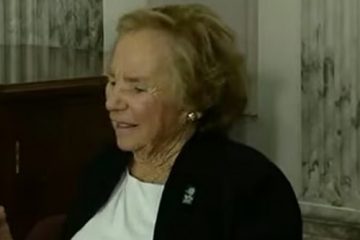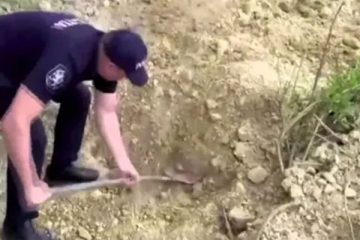New law would require officials to move street kids into schools or other programs – or face a $420-per-child fine.
 Mexico City – Children selling gum or washing windshields in the streets of Mexico are as ubiquitous as traffic lights.
Mexico City – Children selling gum or washing windshields in the streets of Mexico are as ubiquitous as traffic lights.
But a new proposal here would forbid the presence of street children in cities and towns across the country.
Under a proposed modification of a federal child protection law, state and municipal authorities would be required to round up kids living or working on the streets and place them in the care of social service agencies. Authorities who fail to do so would face fines.
The proposal, now being studied in congressional commissions, could be modified, and a final vote is months away. But it is already garnering a strong reaction among children’s rights advocates.
Supporters of the change say it finally turns attention to society’s most vulnerable, attempting to provide children a dignified life of classrooms, after-school activities, and ample playtime.
But for critics, this move to round up street children is too simplistic. It fails to address the complex roots of the problem and, at worst, is an effort to simply sweep the presence of poverty under the rug, they say.
“It’s another attempt to lock children up and clean the city of a social problem, as has been tried here and in the rest of Latin America over the decades,” says Dolores Munozcano Skidmore, a sociologist who studies street children at the National Autonomous University of Mexico.
How big is the problem?
The term street children includes those who are homeless, as well as those who live with their families but work to supplement family incomes. Their presence in Mexico has grown with the decades, in tandem with migration from the countryside to the cities.
According to Mexico’s National Agency for Family Development, in a 2004 study carried out with UNICEF, some 108,917 children are at risk, living on the streets in Mexico. Mexico’s national statistics office estimates that 3.6 million children (under the age of 18) work, and of those, 41.5 percent do not attend school.
Since 1992, children are required by law to attend school through ninth grade. But many still drop out before the age of 15.
“In both rural and urban areas,” according to the sponsors of the proposal – Sen. Mario López Valdez and Sen. Adolfo Toledo Infanzón – “child exploitation has fully become the norm. Thousands of children have been obligated to abandon school to work.”
The Institutional Revolutionary Party (PRI) senators say that the economic crisis – Mexico’s economy is predicted to contract by 5.5 percent this year – will make the situation even more dire. In the state of Guerrero, for example, they cite national statistics showing that 202,000 children work to provide income to their families, and of those, over a quarter have dropped out of school.
A $421 fine per street kid?
The modified article would obligate authorities to send children under age 14 that they encounter on the streets to government social service agencies. The fine for not doing so is up to 100 days of minimum wage (5,500 pesos or $421).
It has drawn fierce criticism in Mexico. A group of 60 children’s rights organizations sent a letter to the senators saying that their proposal “criminalizes poverty.”
But Reynaldo Vieyra Marquez, director of the National Parents Union in Mexico, disagrees. “No one is blaming the kids,” Mr. Vieyra Marquez says. “They are the victims; it is commendable that someone is starting to put the focus on them.”
Still, many say it does not address the economic reality that Mexican families face – in a country where over half the population lives in poverty.
“It is not that we want to see children working as a way of life,” says David Espinosa, an education psychologist at the Interdisciplinary Center for Social Development (CIDES), one of 60 organizations that signed the letter against the proposal, which was introduced earlier this month.
CIDES offers classes to at-risk children to bolster their formal studies. Many of them miss class for their jobs. “They have an economic necessity to help their families,” Mr. Espinosa says. “The politicians want to create a fictitious city, where they say poverty does not exist.”
Selling food at a subway station
Working has been a reality for teenager Eleuteria Dominguez for as long as she can remember. At a recent day at CIDES, she goes through drills with her classmates on what to do in case of an earthquake – a practical lesson that includes a grammar and spelling exercise meant to reinforce lessons at school. She, her three siblings, and her mother sell food at a subway station – mostly on weekends, she says. “Our father doesn’t help much,” she says. “I like to help my mom.”
This is not the government’s first attempt to get children off the streets, and in various cities across the country, local officials already do so.
In 2000, Mexico launched a program called “From the Street to Life,” to bring together the government and various nonprofits to address the problems of street children. The government has also launched an incentive program to keep children in classrooms, paying families monthly allowances if their children stay in school.
Click here to read about a similar program in Brazil
In the 1990s, especially as street children began using drugs and getting caught up in gangs, governments across the region, from Brazil to Central America, relied on a policy of “sweep the streets.” “The tendency has been for governments in Latin America to hide or deny the problem,” says Uche Ewelukwa, an associate professor of law at the University of Arkansas who has written on street children’s rights. But she says such programs, even when touted as a security measure, are often misguided. “If you take children off of the street, more will come onto the street.”
Ms. Munozcano Skidmore says such programs have failed because there are neither the resources nor the understanding of the complexities of why children end up living or working on the streets. Many children are not merely homeless or working for money, for instance. Many have long gotten caught up in organized crime webs, are drug users, or have been forced into prostitution. Some don’t attend school because they do not perceive that formal education will offer them any benefit; instead they opt to work as informal vendors. Many sent to social service organizations simply escape the next day.
Sen. Guillermo Tamborrel Suárez, of the ruling Nacional Action Party (PAN) and head of the commission for vulnerable groups studying the proposal, says he is committed to getting children off the streets. “Each child has a right to live in a family, a right to health, a right to eduction,” he says. But he says he would like to see the language modified to include a case-by-case study of each child’s needs and a process of convincing those who can to return to school or home. “Assistance centers should be the last resort.”


















